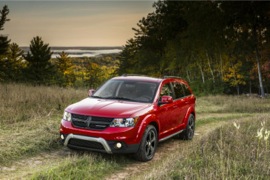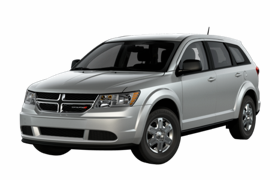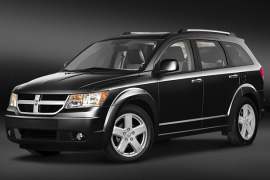DODGE Journey Models/Series Timeline, Specifications & Photos
First production year: 2008
Engines: Gasoline, Diesel
Body style: SUV (Sports Utility Vehicle)
Yes. All of the above mentioned. The Journey was the most affordable mid-size crossover in Canada.
The Dodge Journey offered great versatility and fuel efficiency and was a car designed for larger families with a busy lifestyle.
The 5-door “van” came with different engine options such as a 2.4-liter powerplant that developed 173 hp and a 3.6-liter with 283 hp, the Pentastar Chrysler engine. The Chrysler engine came with a front-wheel-drive or an all-wheel-drive system.
The exterior design was still boxy as the previous model, however, it no longer looked dated.
The Dodge Journey had a nice interior, with comfortable seats and a high driving position that allowed the driver to see over the top.
The materials used in the cabin of high quality, with every surface being a soft-to-touch material of nice leather.
The car was equipped with heated seats and a nice leather-wrapped steering wheel with a good grip.
The controls inside the cabin were almost non-existent, with most of the features being controlled through the touchscreen display.
The Dodge Journey, differing on the trim level (and it offered no less than 9 trim levels) could be equipped with rear park assist, a performant suspension, a 6-speaker performant audio system, chrome door handles and remote start.
At the back, the Journey had dual exhaust chrome tips. A bit unexpected from a 2015 vehicle, the Journey had no power lift tailgate.
After some complaints about the vehicle's quality for the 2009 model, Dodge listened to its customers, and, in 2011, it came with a much-improved version.
The MPV market was big in the U.S., and when a car-maker had a long history in that, it was expected to do its job well. Otherwise, it might lose customers from other segments too. The 2009 Dodge Journey was good on the outside but missed some points on the drivetrain and the interior.
The 2011 model sported a split crosshair honeycomb grille at the front. It was just a part of the front fascia that was refreshed. Even though the MPVs were never considered sporty vehicles, the front bumper featured a lower apron and a silver lip to enhance the car's aggressive look.
The interior was heavily upgraded. The designers replaced the gear-selector and the cup-holders to provide easier access to their cups without moving their eyes from the road. The three-spoke steering wheel was thicker, and due to the multi-function buttons from it, it helped the driver keep their hands on the wheel and not search for a button somewhere else. A new infotainment system with a touch-screen monitor was installed on the center stack.
For the powertrain, Dodge played the power card. While the 2.4-liter version was kept in the lineup to show a low base-price, the top version featured a 287 hp 3.6-liter V6, which was offered as a front all-wheel-drive. The V6 was paired as standard with a 6-speed automatic transmission.
Dodge introduced the Journey for the European market in 2007 at the Frankfurt Motor Show and tried to make a good impression for its new customers.
While the MPV segment started to shrink, Dodge offered something bolder: a crossover MPV able to accommodate up to seven people and take them on long trips. The Journey might have been more successful if the 2007 world financial crisis wouldn't stop. But that happened, and Dodge had to pull back from the European market. Unlike other minivans, it featured an all-wheel-drive version, which made it more capable of reaching a lodge in the mountains.
The front fascia was dominated by Dodge's chromed cross-hair on the grille and big, squared headlights. Its design made it look like a mix between a minivan and an SUV, and that's what it intended to be. The design team installed wider wheel-arches, which gave it a stronger appearance on the road, while in the back, it featured a small roof-spoiler on top of the raked-forward tailgate.
Inside, the sloped dashboard design created a roomier appearance for the front passengers. The angular design for the center stack and instrument cluster was inspired by offroad vehicles. Thanks to its high seating position and individual armrests, it proved to be a comfortable vehicle on long trips. The sliding middle row and the 50/50 split-folding rear seats helped increase the cargo area, which was very small with all seats in place.
Under the hood, Dodge installed a choice of gasoline engines and a Volkswagen-sourced 2.0-liter turbo-diesel. Depending on the options, the Journey was available with a manual or an automatic transmission, front or all-wheel-drive.


